Summarizing nonfiction.
This might be one of the most challenging reading skills/standards that we have to teach our students. I know when I was in the classroom I always dreaded the part of our nonfiction unit when it came time to learn how to summarize nonfiction texts.
My students loved reading nonfiction and for the most part we did great with identifying text features and figuring out the main idea and they were rockstars at asking questions and figuring out the text structure.
But summarizing nonfiction?
That was a challenge.
I never really LOVED teaching nonfiction.
And I think part of the reason why it was challenging for my students is because summarizing in general is a very higher level skill and it requires A LOT from students.
In order for students to successfully summarize, they need to be able to determine importance, synthesize ideas, understand the author’s purpose, Identify the main idea and key details… just to name a few.
But then they also have to be able to write a summary, which means they need to be able to write in complete sentences, they need to be able to paraphrase, they need be concise in their writing and they need to be able to write a summary in a way that makes sense with the text.
So if you have ever felt like teaching students to summarize nonfiction is challenging, you’re not alone. It definitely is.
But there are also things that we can do to help our students experience success when it comes to summarizing nonfiction and today I want to share with you 3 strategies that will help you teach nonfiction summary to your students.
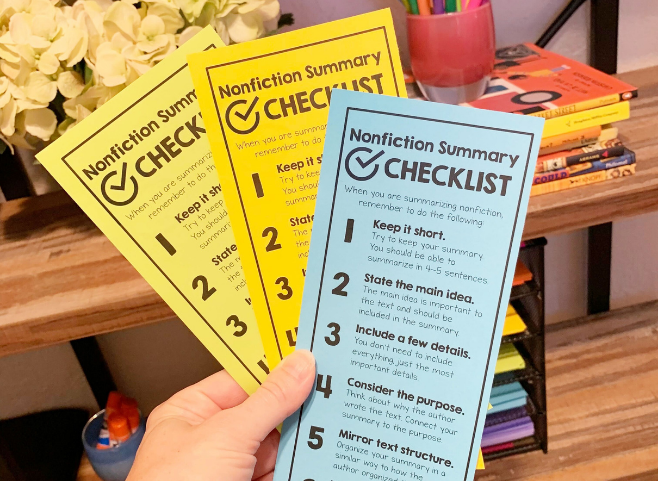
Characteristics of a nonfiction summary:
Now before I actually teach my students strategies that will help them summarize nonfiction texts, I like to teach them what a summary is (and what it isn’t) and make sure they they understand the end goal when they are asked to summarize a nonfiction text.
One of the ways I do this is by teaching them the attributes or characteristics of a nonfiction summary. That way they know that no matter WHAT strategy they choose to use, they have a pretty solid understanding of what their summary should look like.
Here are the six things that I tell my students to keep in mind when writing a nonfiction summary.
- Keep it short (summaries should be around around 4-5 sentences).
- Clearly state the main idea of the text.
- Only include a few of the most important details.
- Make sure you consider the author’s purpose.
- Your summary should mirror the structure (organization) of the text.
- Use your own words when writing a summary.
Sentence Writing Routine Free Sample
If your students struggle to write at the sentence level, this new literacy routine is going to be your new best friend. Each day of the week your students will engage in a quick (yet effective) sentence writing task that will help them become more confident and creative writers. Say goodbye to fragments and boring sentences, and say hello to complex sentences with lots of details!
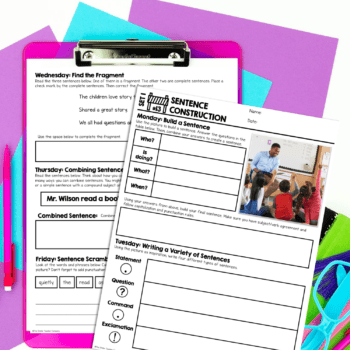
Now, let’s talk strategies!
Strategy 1: TAMKO
With this strategy, each letter stands for a different element of the summary. I kind of compare it to the nonfiction version of the SWBST strategy. In reality, it’s just a bunch of random letters, but when you teach it to students it gives them a specific formula that will help them summarize nonfiction.
I really like teaching this strategy to students because it helps them craft the first introductory sentence for their summary. And I have found that very first sentence can be one of the hardest ones to write. If students know how to start their summary, it will be a lot easier for them to finish.
So let’s breakdown what T-A-M-K-O stands for:
- T stands for Text Type:
- The very first thing you want students to do is state the title of the text and explain the type of text it is.
- Example: In the book Kids vs. Plastic…
- In the example you can see that students write the title (Kids vs. Plastic) and they explain it’s an actual book.
- Other examples they could use to start their summary:
- In the article ___________
- After reading the passage ____________
- In the magazine ___________
- On the website ____________
- A stands for Author and Action:
- The next thing students will do is name the author and the verb that describes the purpose for writing.
- Example: …Julie Beers explains…
- This is a continuation of the first sentence.
- Sometimes the author’s name isn’t always give so students can just say “the author”.
- For example:
- The author describes
- Mr. Jackson shares his opinion
- Emily Clarkson informs her readers
- M stands for the Main Topic:
- The last thing students will do to write their introductory sentence is state the main idea or the main topic of the text (whatever makes the most sense in their sentence).
- Example: …the negative impact plastic has on the environment.
- It’s important that students realize the TAM form a complete sentence so the topic needs to be written in a way that will make the sentence complete.
- Sometimes it will be one or two words and other times it will be a longer more descriptive phrase.
This is how their summary would begin using TAM.
In the book Kids vs. Plastic, Julie Beers explains the negative impact plastic has on the environment.
I have found that giving kids this formula to help them get started with their summary can be really helpful and effective.
The next two letters of the TAMKO strategy are a little less formulaic and provide general guidelines/reminders for students to keep in mind when summarizing.
- K stands for Key Details.
- The next thing students need to do is include 2-3 key details that support their introductory sentence.
- If the author is describing, then they should find 2-3 details that help describe the topic.
- If the author is explaining, then they should find 2-3 details that explain the process or steps or problem and solution the author is highlighting.
- If the author is trying to persuade the reader, then they should find 2-3 of the most persuasive details the author included in the text.
- This step can be a little bit challenging for students, but I think it’s important to let students feel empowered in their ability to select relevant details to include in their summaries.
- O stands for Organization.
- Remind students to organize their summary in the same way as the author organized the text.
- This one is really helpful and can guide the rest of their summary.
- If students can identify the text structure the author used to write the text, then they can organize and set up their summary in the same way.
Summarizing can often feel feel really overwhelming for students, especially if they aren’t good writers or if they lack confidence in their reading comprehension, but with this strategy, you are making summarizing almost fool-proof. Students are given the exact words and framework to help them begin their summary.
And anytime we can help kids feel more confident in their reading the better.
Strategy #2: Asking the 5W and H Questions
This strategy can be easy for students to use because it connects to something students already know how to do… and that is asking the 5W + H questions.
More than likely, if you are an upper elementary reading teacher, then your students at some point have been exposed to the idea of asking the questions who, what, when, where, why, and how for the text they are reading.
And there is so much benefit to being able to connect a reading strategy to something students already know how to do. Basically with this strategy you are teaching students to ask specific 5W + H questions for the nonfiction text and then using their answers to help them summarize a nonfiction text.
So you could teach this strategy at the most basic level and that would look something like this:
Give your students the following questions to ask and answer for the nonfiction text they are reading:
- Who is the text about?
- What events are happening (to the person) in the text?
- When did the events take place?
- Where does the event in the text take place?
- Why is this event important?
- How did this event happen?
But sometimes these typical who, what, when, where, why questions don’t match up with EVERY single text. For example, not every nonfiction text you give your students will have a WHO has the subject or they might not mention a specific location.
The good news is that these questions can still help students summarize nonfiction. But instead of teaching students specific questions, you just want to teach them the question stems and let them customize the questions based on the text they are reading.
So here some different questions your students could ask for each of the stems:
- Who?
- Who is the text about?
- Who wrote the text?
- Who is the intended audience for the text?
- Who is impacted by the problem in the text?
- What?
- What happens in the text?
- What topic is the author writing about?
- What details does the author include?
- What lesson is the author trying to teach?
- When?
- When was this text written?
- When did the events take place?
- When did the problem become discovered?
- Where?
- Where does this event take place?
- Where is the author from?
- Why?
- Why is this event/person/topic signifiant?
- Why did the author write this text?
- Why is this topic important to read about?
- How?
- How did the author organize the information in the text?
- How do these details connect to my personal life?
- How did this event take place?
- How does the author suggest we solve the problem?
So remember that the goal is not just for students to ask and answer the basic or first who, what, when, where, why, and how question that comes to mind, but to critically think about the types of questions they are asking and then use their answers to help them craft a summary.
If students are actively asking and answering questions (and using these 5W +H stems) they will discover all the key details that will help them summarize the main points of the text.
Strategy #3 – Text Structure Summary
This one should be no surprise to y’all since you know I’m such a fan of teaching students how to identify and understand nonfiction text structure.
Nonfiction text structure can give students a road map that will not only help students understand the text, but it can also give them a framework that will help them summarize the text.
Nonfiction summaries should mirror the structure of the text… and if we clearly explain that to our students, they have just one more strategy in their toolbox that will help them summarize nonfiction text.
When I’m teaching students to summarize nonfiction using the text structure, I have them think about their summary in three parts:
- Beginning:
- In the beginning of their summary, they want to state the main topic of the text (which should also hint at the text structure)
- Example 1: In this text, the author shares the similarities and differences between crocodiles and alligators.
- Example 2: Pollution in the ocean is becoming a huge problem, but a group of students from New York have come up with a creative solution.
- As you can see in both of those examples, the organizational structure is mentioned.
- Middle:
- In the middle of their summary, students should include 2-3 details from the text.
- And the important thing to keep in mind is that they should share them in the same way the author organized the text.
- So if you go back to Example 1, if it is a compare and contrast text on crocodiles and alligators, then their summary might includes the most significant similarity and the most significant difference between the two animals.
- If you go back to Example 2, if it is a problem and solution text on ocean pollution, then their summary might include 1-2 sentences that state the problem and 1-2 sentences that explain the solution presented in the text.
- End:
- And then finally, you want to teach students to end their summary with a concluding statement that will reiterate the main idea and text structure. It will be very similar to their introduction.
- Example 1: So while there are many similarities between alligators and crododiles, this text also highlights their differences.
- Example 2: The students from New York are making a big impact on a global problem with their creative solution to ocean pollution.
Now this strategy is a lot more open-ended then the TAMKO strategy, but I think it’s important to teach students a wide range of strategies. Some of your students will gravitate towards the structure of TAMKO and others will like the flexibility of a text structure summary.
I like teaching an open-ended approach like the text structure summary strategy because then your students can make it work for almost any text…. Sometimes when we teach a very scripted formula like TAMKO, it can be hard for students to apply that to a text that doesn’t meet all the criteria.
For example, if you only teach the TAMKO strategy, but students are reading a text that doesn’t include the author’s name or maybe it doesn’t have a specific title, students might struggle to adapt that strategy to summarize the text…. But with a strategy that is a little more open-ended like teaching them how to summarize using text structure, they have options to use when it comes to their independent reading.
Your Next Steps:
Ok, now that you have three strategies to help you teach nonfiction summary, I’m curious which one will you start with. Remember, with any strategy you teach your students, the goal isn’t for them to MASTER a specific strategy. The goal is for them to understand the text and feel confident in their ability to apply a specific reading skill – in this case summarizing the text.
Hopefully one (or more) of these strategies will help.
Before you go, be sure to grab your free Nonfiction Summary Checklist (below) and if you’re looking for more strategies and resources to help you teach nonfiction summary, check out this bundle of resources on TPT.
Happy Teaching!
Small Group Lesson – Inferring Character Traits
Are you ready to get started with small group lessons, but not exactly sure what to do with your students once you get them to your small group table? I’ve been there. One of the things that helped me with my small group lessons was having a super simple framework that I could use for my small group lessons no matter the level of my students or the focus for our lesson.
When it comes to teaching small groups, I like to use what I call the 4T Model: Target, Teach, Tackle, Transfer.
👇 Grab this free download to learn more about how you can use the 4T Model with your small groups.
In this free download, you’ll get:
• A teacher guide to explain the 4T model
• Lesson plan template + sentence starts
• Sample lesson + materials for inferring character traits
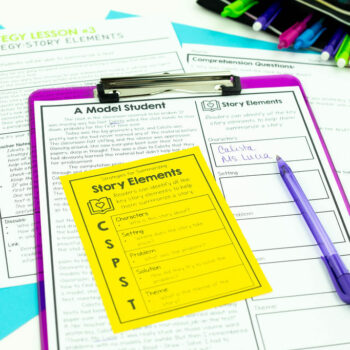


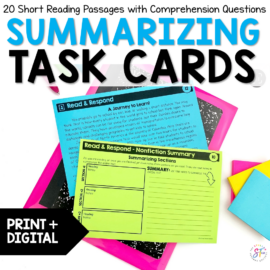
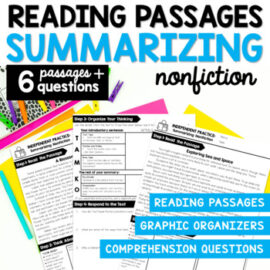
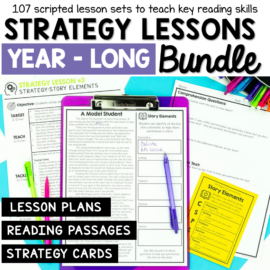
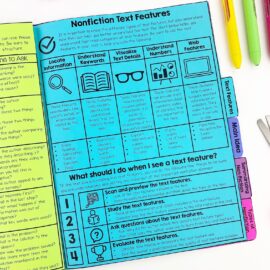
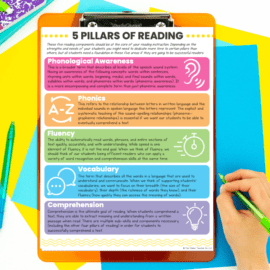
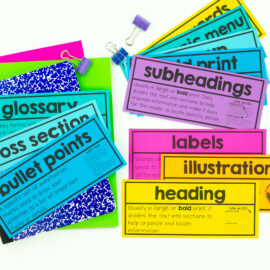









Leave a Comment
You must be logged in to post a comment.